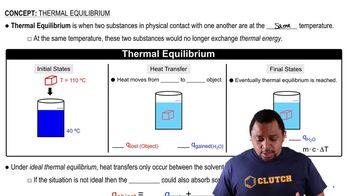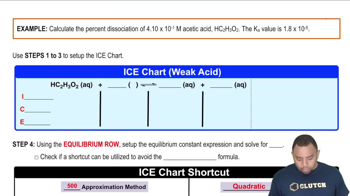Here are the essential concepts you must grasp in order to answer the question correctly.
Dissociation and Equilibrium
Dissociation refers to the process where a compound breaks down into its constituent ions in solution. In the context of weak acids like acetic acid, this process is reversible and reaches an equilibrium state. The equilibrium constant (Ka) quantifies the extent of dissociation, indicating how much of the acid ionizes in solution. Understanding this concept is crucial for calculating percent dissociation.
Recommended video:
Henderson-Hasselbalch Equation
The Henderson-Hasselbalch equation relates the pH of a buffer solution to the concentration of its acid and conjugate base. It is expressed as pH = pKa + log([A-]/[HA]), where [A-] is the concentration of the conjugate base (sodium acetate) and [HA] is the concentration of the weak acid (acetic acid). This equation helps in determining the pH of the solution, which is essential for calculating the percent dissociation of the weak acid.
Recommended video:
Henderson-Hasselbalch Equation
Percent Dissociation
Percent dissociation is a measure of the extent to which a weak acid ionizes in solution, expressed as a percentage of the initial concentration. It is calculated using the formula: (amount dissociated / initial concentration) x 100%. This concept is important for understanding the strength of weak acids and their behavior in buffer solutions, particularly in the context of the given concentrations of acetic acid and sodium acetate.
Recommended video:
Percent Dissociation Example




